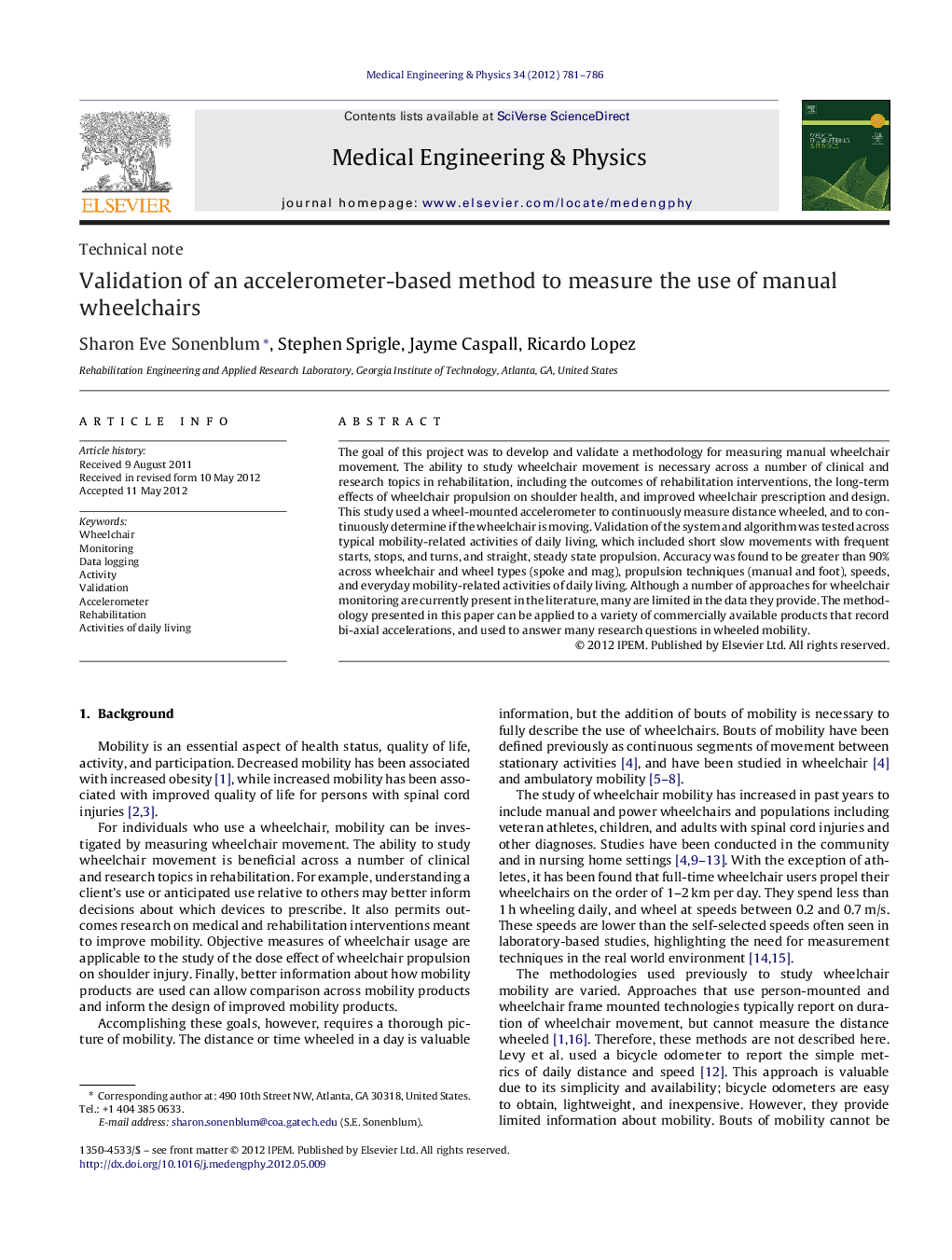| Article ID | Journal | Published Year | Pages | File Type |
|---|---|---|---|---|
| 876188 | Medical Engineering & Physics | 2012 | 6 Pages |
The goal of this project was to develop and validate a methodology for measuring manual wheelchair movement. The ability to study wheelchair movement is necessary across a number of clinical and research topics in rehabilitation, including the outcomes of rehabilitation interventions, the long-term effects of wheelchair propulsion on shoulder health, and improved wheelchair prescription and design. This study used a wheel-mounted accelerometer to continuously measure distance wheeled, and to continuously determine if the wheelchair is moving. Validation of the system and algorithm was tested across typical mobility-related activities of daily living, which included short slow movements with frequent starts, stops, and turns, and straight, steady state propulsion. Accuracy was found to be greater than 90% across wheelchair and wheel types (spoke and mag), propulsion techniques (manual and foot), speeds, and everyday mobility-related activities of daily living. Although a number of approaches for wheelchair monitoring are currently present in the literature, many are limited in the data they provide. The methodology presented in this paper can be applied to a variety of commercially available products that record bi-axial accelerations, and used to answer many research questions in wheeled mobility.
